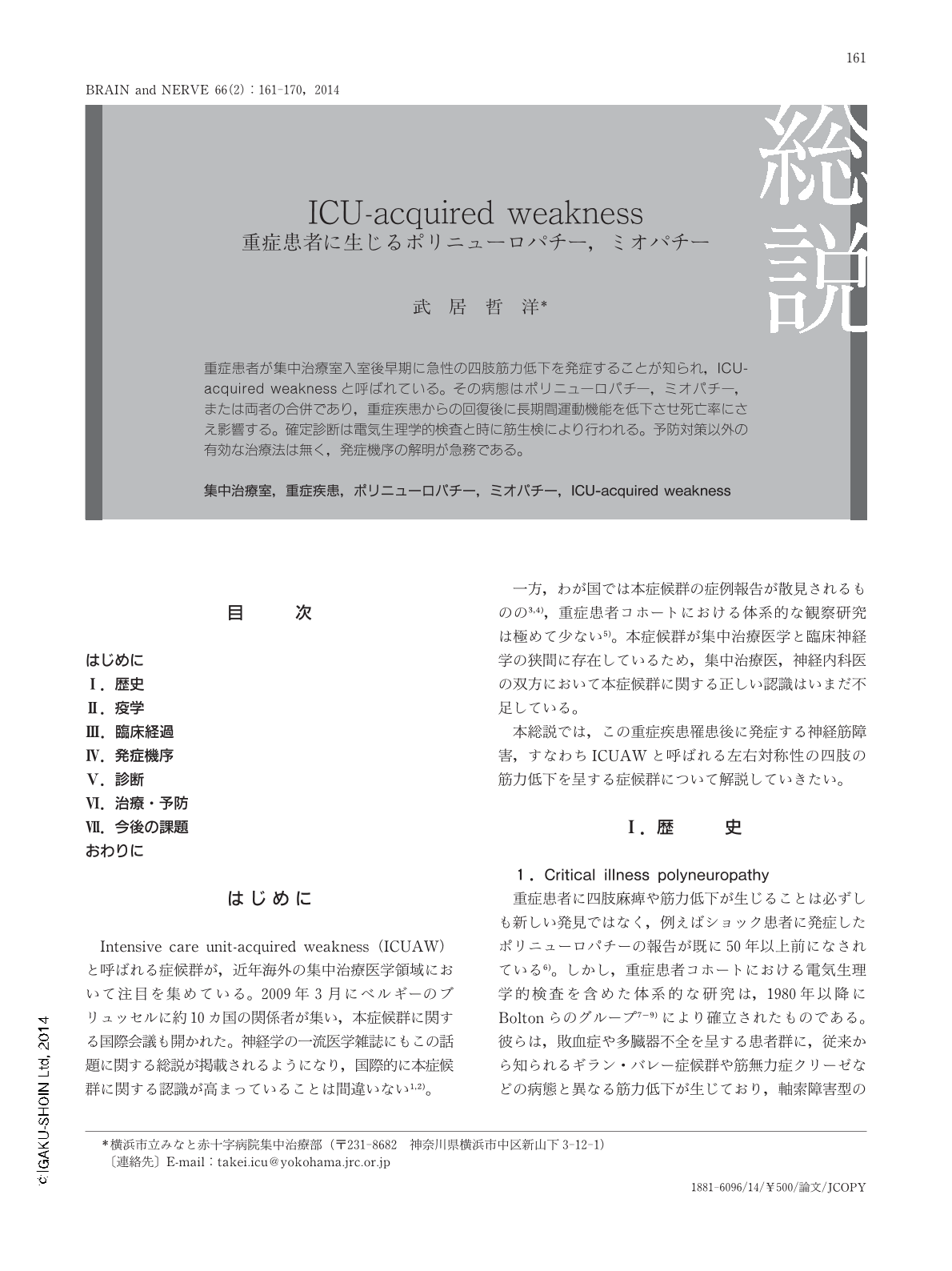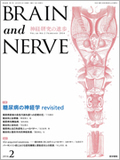Japanese
English
- 有料閲覧
- Abstract 文献概要
- 1ページ目 Look Inside
- 参考文献 Reference
重症患者が集中治療室入室後早期に急性の四肢筋力低下を発症することが知られ,ICU-acquired weaknessと呼ばれている。その病態はポリニューロパチー,ミオパチー,または両者の合併であり,重症疾患からの回復後に長期間運動機能を低下させ死亡率にさえ影響する。確定診断は電気生理学的検査と時に筋生検により行われる。予防対策以外の有効な治療法は無く,発症機序の解明が急務である。
Abstract
Critically ill patients in the intensive care unit (ICU) often develop ICU-acquired weakness, which is characterized by acute or subacute onset diffuse limb weakness, during the early course of their severe illness and is related to prolonged mechanical ventilation, ICU stay, hospital stay, and even increased mortality. The development of generalized weakness or paralysis may be because of critical illness polyneuropathy (CIP), critical illness myopathy (CIM), and a combination of both. The basic mechanisms underlying these disorders are complex and poorly understood. Several risk factors, including severe sepsis and multiple organ failure, are implicated, whereas the effects of the use of steroids and neuromuscular blocking agents and hyperglycemia on the development of this condition remain to be clarified. Furthermore, whether each risk factor is associated with the development of CIP, CIM, or both has not been clarified thus far. Typically, the condition of patients is diagnosed on the basis of the assessment of risk factors, neurological findings, and electrophysiological examinations, including nerve conduction study and needle electromyography. In addition, muscle biopsy and direct muscle stimulation test can be used to distinguish CIP from CIM. To date, no therapeutic approach has been established for ICU-acquired weakness, and potential preventive measures should be implemented in the daily management of the critically ill patients. Further studies are required to clarify the pathogenesis of these disorders and to identify appropriate therapeutic options.

Copyright © 2014, Igaku-Shoin Ltd. All rights reserved.


